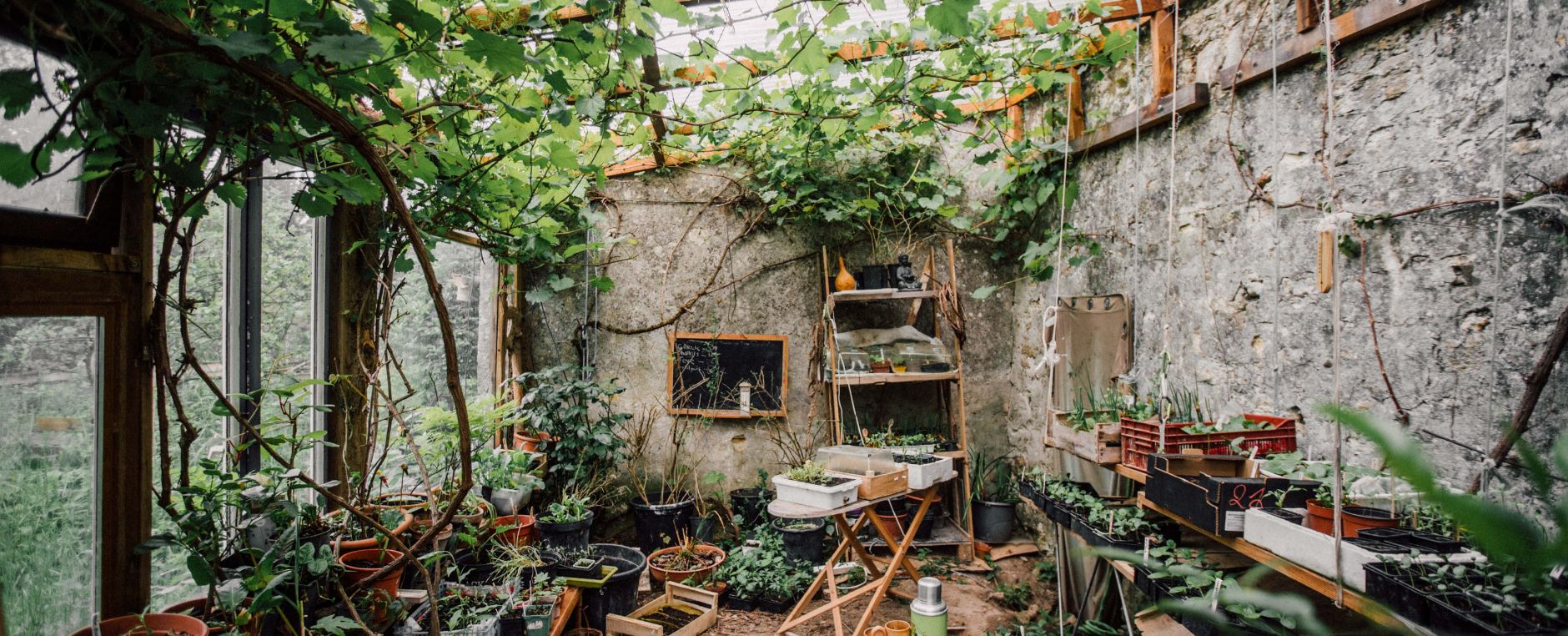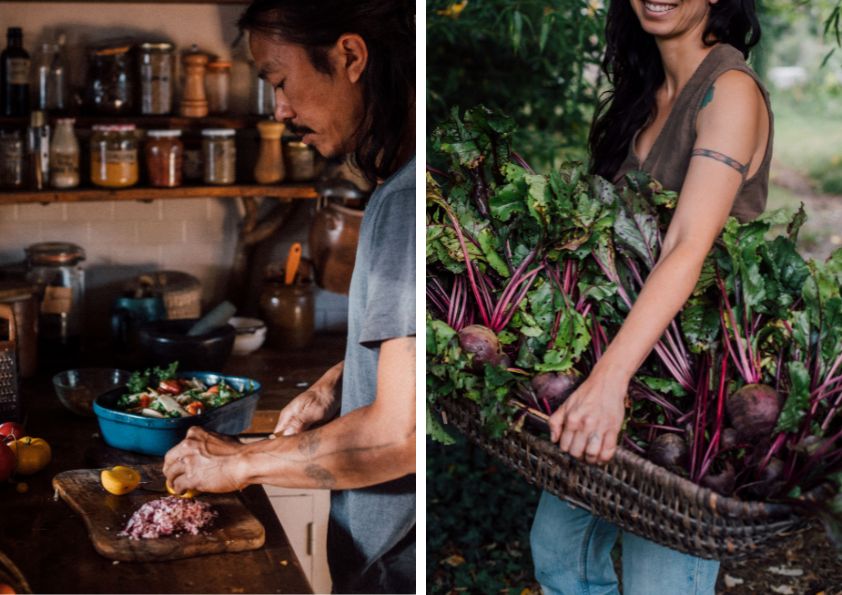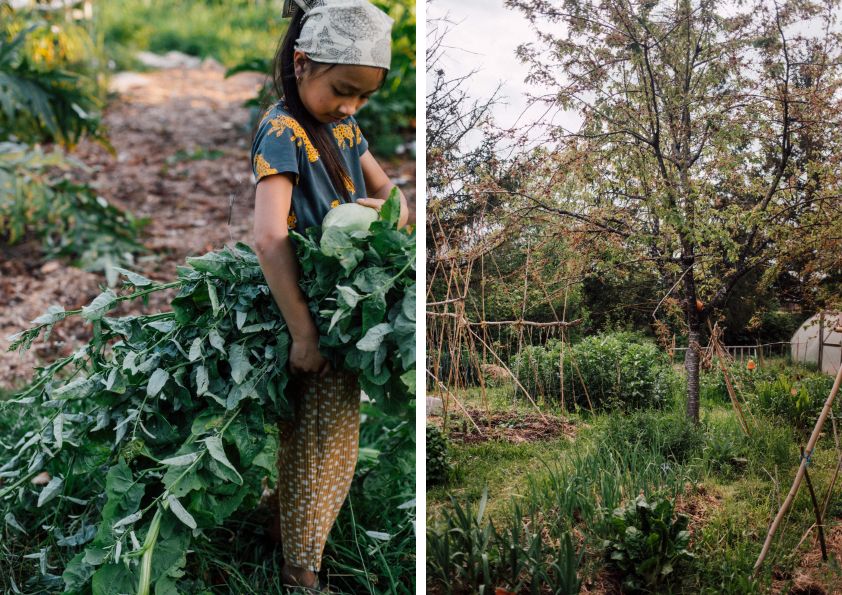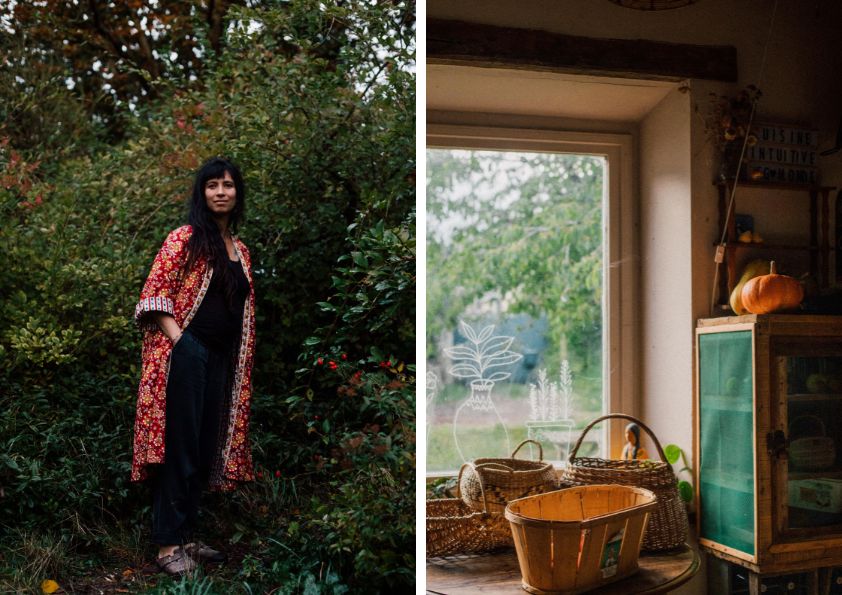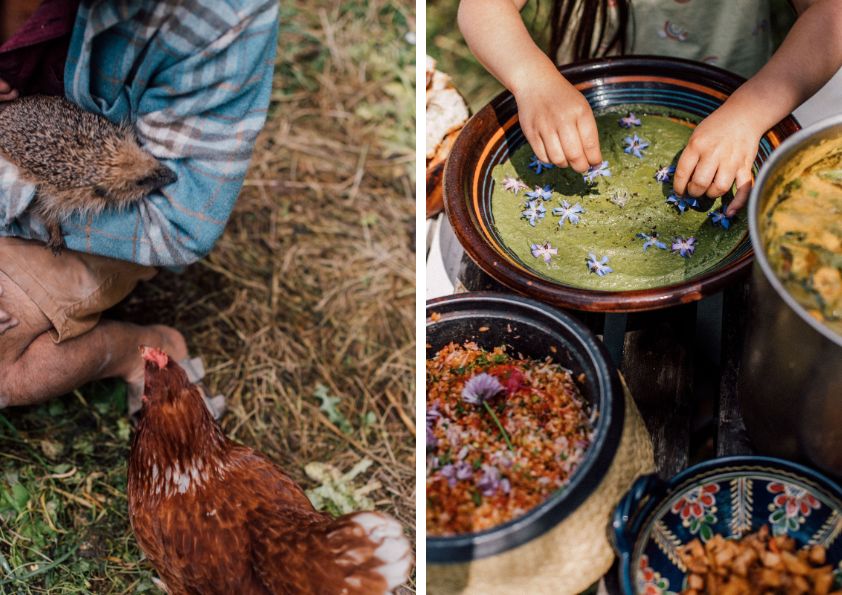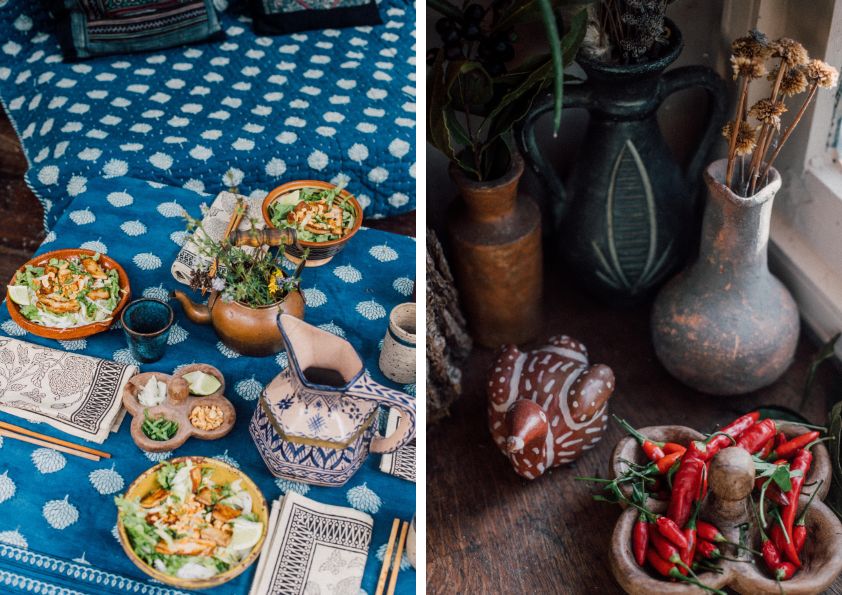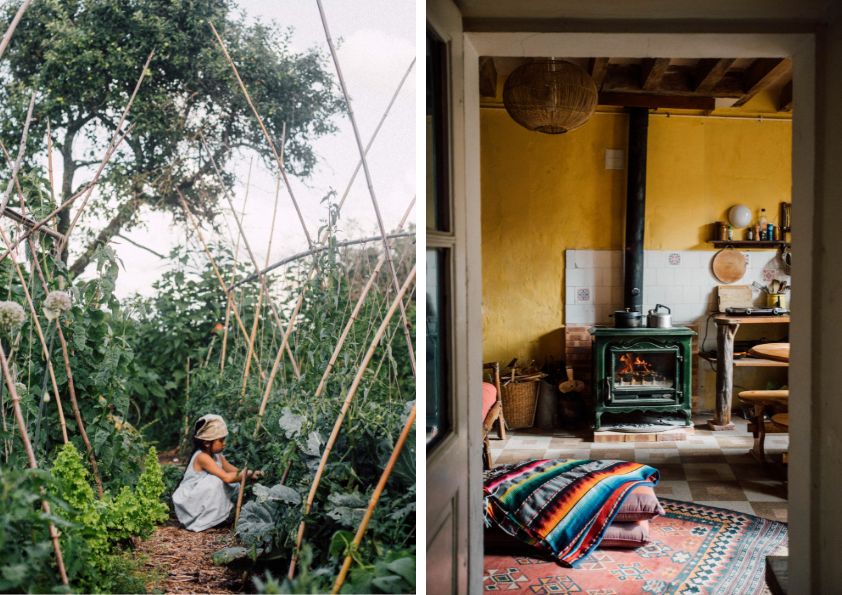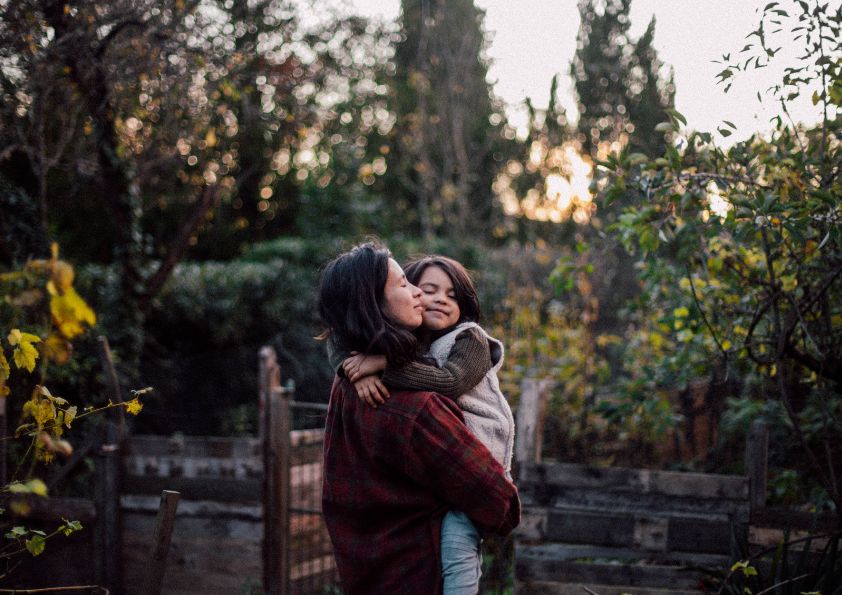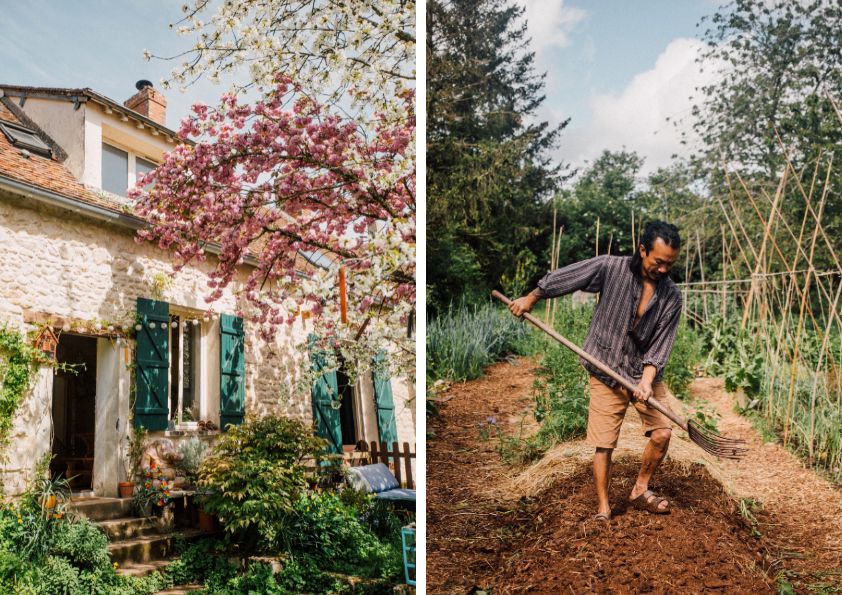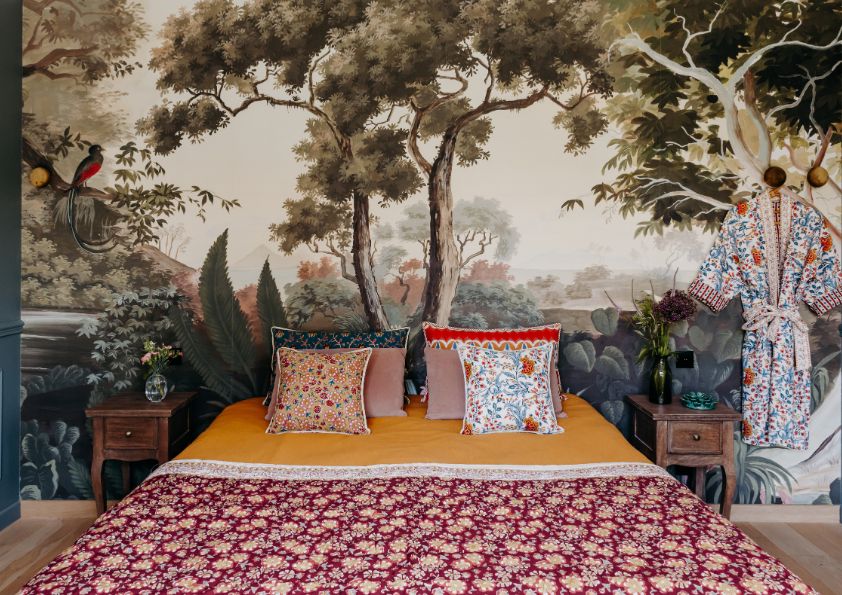Nature en Harmonie : Beauté Apaisante
Nature en Harmonie : Beauté Apaisante
Rencontre avec Martine Marras, une passionnée de permaculture et de vie en harmonie avec la nature, qui a su transformer sa vision en réalité avec @thetamarindtree_permaculture. Après avoir quitté le tumulte de Paris pour adopter un mode de vie plus durable, elle nous partage son parcours inspirant et son engagement envers un habitat respectueux de l'environnement.
Peux-tu nous raconter comment est née l’idée de @thetamarindtree_permaculture et ce qui t’as poussé à te lancer dans la permaculture ?
Lorsqu’on a eu des enfants, on s’est posés comme beaucoup de gens des questions sur la vie de famille dans une grande ville (on habitait à Paris). On passait notre quotidien à courir et à travailler et on trouvait peu d’espace et de moments à partager tous ensemble. Etant de plus en plus attentifs à nos pratiques de consommation, notamment à notre alimentation et notre rapport à la nature, on a décidé de commencer à faire pousser ce qu’on mangeait. On a trouvé un ancien corps de ferme à rénover avec un jardin et on s’est lancés dans ce qui est devenu un vrai projet de changement de vie! On ne voulait pas s’isoler pour autant en partant vivre à la campagne, d’où l’idée qui est venue très naturellement de partager notre maison en créant des petits espaces pouvant accueillir une à plusieurs personnes.
Qu’est-ce qui t’a le plus inspiré dans le mode de vie en permaculture, et comment l’intègres-tu dans ta vie quotidienne ?
On pense parfois que la permaculture se résume à une technique de jardinage, mais pour nous cela représente surtout un mode de vie responsable qui nous a amenés à comprendre comment fonctionne la nature et à s’en inspirer dans la vie de tous les jours. Cela passe par les pratiques de consommation mais aussi par les rapports humains pour être le plus respectueux possible de ce qui nous entoure. Un exemple concret, dans la nature il n’y a pas de déchet, tout ce qui meurt retourne à la terre (les feuilles qui tombent des arbres, les animaux qui meurent, etc.) donc on s’inspire de ce cycle naturel en essayant de consommer ce que l’on produit et en compostant nos déchets organiques. De même, on laisse beaucoup de zones du jardin à l’état sauvage pour créer des habitats pour les petits animaux sauvages et rapporter le plus de biodiversité autour de nous. Il y a tout un tas d’autres pratiques permaculturelles qui peuvent être mise en place pour tendre vers un mode de vie plus durable.
Carré de coton Indi © Thetamarindtree
Quels sont les plus grands défis que tu as rencontrés en mettant en place ton projet, et comment les as-tu surmontés ?
Quand on a commencé cette transition de la ville à la campagne, on n’avait aucune expérience en jardinage ni en construction. On a dû tout apprendre de A à Z, notamment le fait que l’échec fait aussi partie de la phase d’apprentissage et d’expérience et que rien n’est parfait ni permanent. Ça nous a permis de trouver encore plus de beauté dans ce qui nous entoure, même les angles qui ne sont pas droits ou les étagères installées de travers!
Kimono matelassé Dalia © Thetamarindtree
Comment as-tu relié la permaculture à ton concept de guest house ?
On tenait vraiment à partager ce que la permaculture nous permet de vivre en tant que famille avec ceux qui veulent expérimenter ce mode de vie par un séjour dans un habitat écologique et avec l’accès à une alimentation saine, locale et de saison. Après trois ans d’accueil, on peut dire que ceux qui passent chez nous repartent nourris de quelque manière que ce soit dans leur réflexion ou leur évolution vers un mode de vie plus responsable et écologique, c’est sûrement là que prend forme notre activisme au quotidien.
© Thetamarindtree
Comment choisis-tu ta décoration pour qu’elle s’intègre dans un mode de vie axé sur la permaculture et le respect de l’environnement ?
On privilégie au maximum ce qui est de seconde main et les matériaux de récupération et quand on doit construire une nouvelle étagère ou un meuble, on regarde ce qu’on a à disposition et on crée à partir de ça. L’idée est que tous les matériaux que l’on utilise puissent retourner à la terre un jour comme le bois, la terre cuite, le bambou, etc. De même qu’avec le textile en essayant de récupérer du lin, du chanvre ou encore des tissus à base de teinture naturelle. J’adore aussi inclure des éléments chinés à petit prix et qui viennent d’autres cultures pour que notre lieu soit aussi l’occasion de voyager un peu!
Nappe indigo Nagru © Thetamarindtree
Où as-tu puisé tes inspirations pour la décoration de ton guest house, notamment pour créer une atmosphère en lien avec la nature ?
On a voulu créer dans chaque guesthouse un lieu où les gens peuvent venir se reposer et prendre le temps de réfléchir et surtout apprécier la simplicité de ce qui les entoure, sortir quelques instants dans le jardin et se balader entre les allées du potager ou encore allumer un feu et se retrouver autour du poêle à bois. Avec les années on remarque que les visiteurs profitent de leur séjour pour passer du temps ensemble et ralentir le rythme d’un quotidien où tout va souvent très vite. Les intérieurs sont assez épurés en mobilier avec des détails colorés notamment dans une des guesthouses dans laquelle nous nous sommes inspirés de la culture mexicaine avec des motifs floraux sur les tapis au sol ou les tentures au mur, ou encore des représentations graphiques d’oiseaux, très présentes dans l’art mexicain.
Carré de coton Indi © Thetamarindtree
Jamini est connue pour ses motifs floraux et géométriques. Que penses-tu d’intégrer des motifs floraux et végétaux dans ton intérieur, et quelle est pour toi l’importance de ramener la nature dans nos espaces de vie ?
Il est bien connu que toute l’imagerie et les couleurs de la nature nous procure des sensations joyeuses et positives. C’est une excellente idée de l’amener le plus possible chez nous à travers les tissus, les objets que l’on utilise tous les jours. Je pense aussi qu’on devrait tous faire plus partie de la nature plutôt que le contraire, donc sortir de chez soi et aller explorer l’environnement naturel qui nous entoure est ce qui peut nous faire le plus de bien.
© Thetamarindtree
Chez Jamini, on aime les intérieurs floraux, que ce soit avec des belles plantes ou des motifs imprimés : comment ramènes-tu les fleurs et la nature dans intérieur au quotidien ?
À l’intérieur de la maison on retrouve beaucoup d’herbes aromatiques que l’on accroche pour sécher, les récoltes comme les belles courges colorées d’automne, les noix, noisettes, l’ail ou encore le maïs tressés au mur. On laisse les fleurs qui poussent au jardin pour qu’elles puissent profiter aux insectes et parce qu’elles rendent le potager encore plus beau. J’aime beaucoup les tapis colorés, les plaid ou encore les nappes fleuries pour mettre en valeur notre intérieur dont les murs (qui ont été rénovés en chaux chanvre) sont dans des tons plutôt clairs et unis. Je suis aussi très sensible à l’artisanat et ce qui nous fait voyager à travers les cultures.
© Thetamarindtree
As-tu un conseil à donner à ceux qui aimeraient se lancer dans la permaculture mais ne savent pas par où commencer ?
On a souvent peur de se lancer dans quelque chose qu’on ne connaît pas et qu’on ne maîtrise pas. Mais tout s’apprend et je ne peux qu’encourager les personnes hésitantes à se lancer, à se documenter, expérimenter, à rejoindre des chantiers participatifs, faire du Woofing, on peut tous participer à rendre la planète plus vivable pour notre génération et les générations futures.
Quels sont tes objectifs pour @thetamarindtree_permaculture dans le futur, et comment souhaites-tu faire évoluer ton concept ?
Notre objectif principal est de continuer à rénover la maison pour qu’elle soit la plus passive possible en termes de consommation énergétique. Le jardin se porte à merveille donc on aimerait bien que ça continue en ce sens-là! On a aussi envie de développer plus d’espaces communs et de rencontres dans le jardin pour que les visiteurs de nos guesthouses puissent partager des moments ensemble, avec l’esprit d’une auberge. Et enfin aménager d’autres espaces d’hébergement qui permettrait aux visiteurs de pouvoir séjourner quel que soit leur budget, rendre la nature et l’accès à une nourriture de qualité accessible à tous.
As-tu une pièce ou un élément de décoration préféré chez Jamini ? Si oui, lequel et pourquoi ?
Les couvre-lits matelassés car on peut les utiliser de plein de manières différentes, sur un lit, un canapé ou encore au sol quand on veut créer un petit coin confortable. Les motifs et les couleurs sont toujours superbes et chaleureux.
Quelle est ta couleur préférée dans les collections Jamini, et en quoi cette teinte résonne avec ton univers et ta vision de la nature ?
J’aime beaucoup les pièces en indigo car elles sont faites en teinture naturelle et parce que c’est une couleur qui transporte aussi bien en Asie qu’en Afrique.
Pour finir, as-tu une anecdote ou un moment marquant à partager sur ton parcours en permaculture ?
Les anciennes générations étaient très sceptiques quand on a remplacé nos toilettes classiques par des toilettes sèches. Après quatre ans, elles s’avèrent être l’expérience écologique que les grands (et petits) préfèrent et elles ont un vrai impact positif sur notre environnement. Comme quoi il ne faut pas avoir peur du changement!

